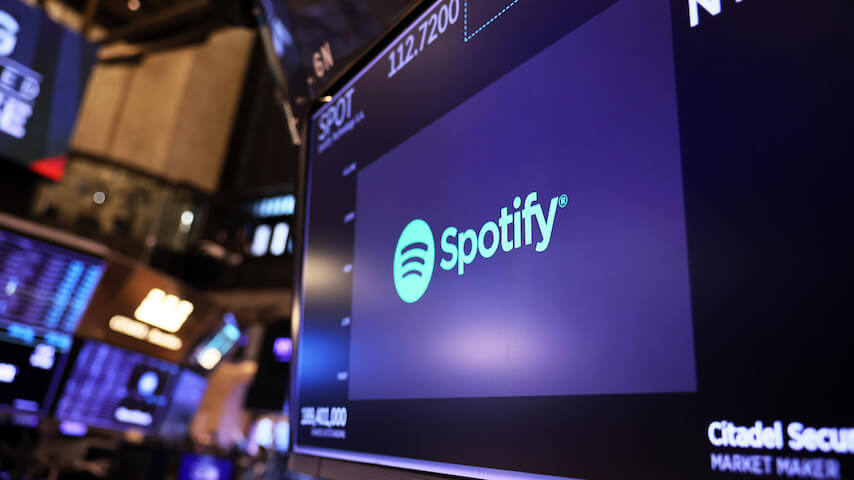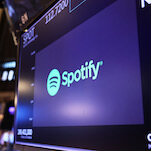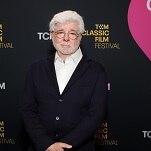More than 10 months after rolling out the program in other markets, Spotify is finally, apparently, gearing up to tantalize U.S. and Canadian users with a rare and surprising delight: Videos that play alongside the songs you’ve been listlessly playlisting your way through for hours at this point, appearing in the manner of short films or other snippets of visual delight; “music videos,” if you will.
But, no, seriously: Spotify has apparently been looking at the virtual monopoly that YouTube currently holds on the music video market, and decided it’s finally time to get a piece of it for itself. There’s no specific timeline for the rollout, but Variety reports that, in “coming weeks,” premium users of the service will be able to access official music videos alongside their songs, switching between audio and video versions at the push of a button.
Spotify tipped its hand, apparently, by rolling out a new agreement with the National Music Publisher’s Association earlier this week, announcing a new “Opt-In Portal” that will allow NMPA members to directly license expanded audiovisual rights to the service. Which certainly sounds like a fancy way of saying “Let us play your music videos, and we’ll give you a slightly larger fraction of the fractional amounts of money we give you right now.” (More practically, it’ll mean (allowing indie artists and other smaller labels to get in on the same visual deals it’s been striking lately with the big labels, including Warner Bros., Sony, and Universal.)
This is not the first time that Spotify has chafed against the fact that, while it maintains at least partial domination of the planet’s ears, it has precious little hold over its delicious, jelly-filled eyes. The platform flirted with video content all the way back in 2015, but to little effect; more recently, it’s allowed the increasing videoification of podcasting to infect its service, to some pretty massive numbers. Now, Spotify is apparently trying to go after the lucrative market of people who hear an OK Go song pop up on a playlist and then switch over to one of the video services in order to get the full effect. The program rolled out in Europe back in January, with a limited catalog of artists and videos, but will likely expand further when it arrives in domestic territories some time in the near future.








































